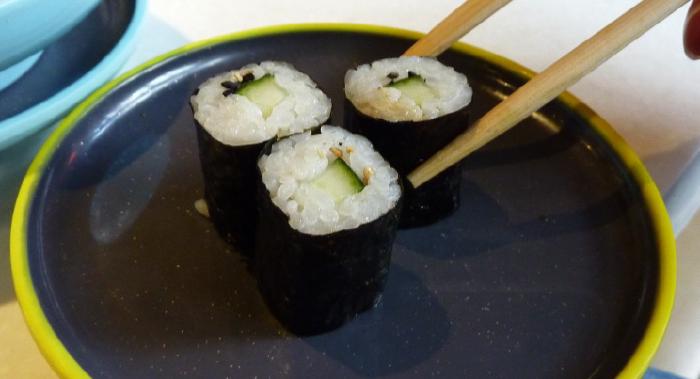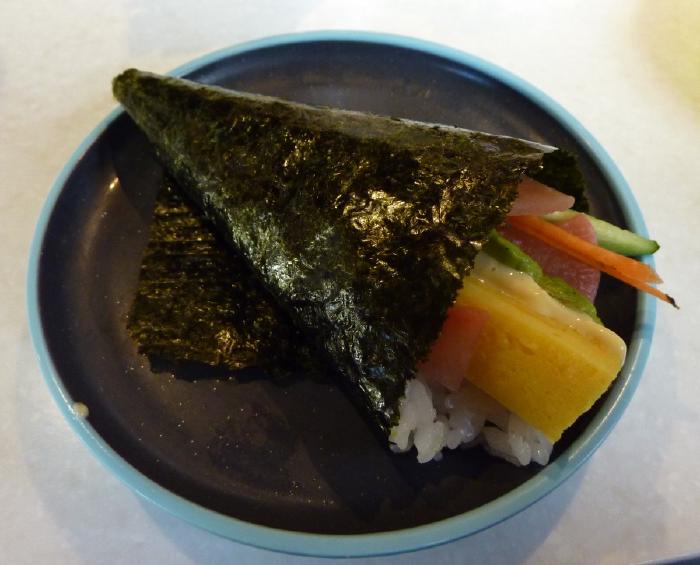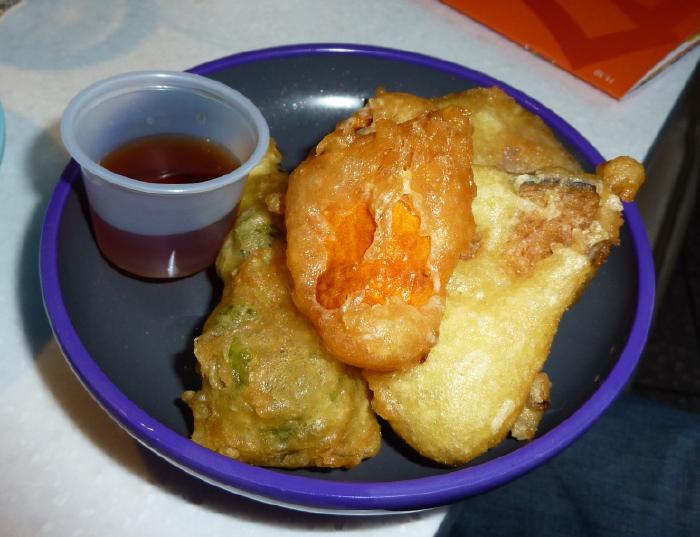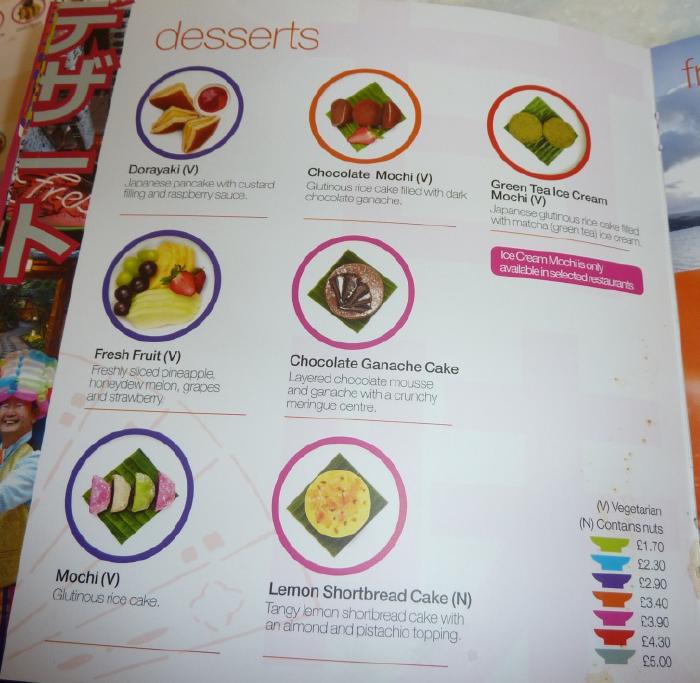Eating Out > The Vegetarian Guide to Yo! Sushi
The Vegetarian Guide to Yo! Sushi
By Jo /

I would never have thought of visiting Yo! Sushi or any other sushi establishment until I met Ben (my now husband). He has long been a fan of sushi, and other Japanese foods - and it’s thanks to him that I now love vegetarian sushi!
Like many people I use to think that sushi traditionally always contained raw fish. However, I now know this not to be the case. The term ‘sushi’ refers to a Japanese dish consisting of cooked vinegared rice which is commonly topped with other ingredients, or put into rolls. Sushi therefore doesn’t have to contain fish, and many of the traditional Japanese varieties are vegetarian. You may have tried veggie sushi from supermarkets or coffee shops - but the sushi from Yo! Sushi tastes so much better, because it is freshly prepared.
As well as offering some great vegetarian sushi, Yo! Sushi also serve a range of hot Japanese dishes, many of which are vegetarian. All of the vegetarian items are marked with a ‘V’ on the menu, including the desserts. If you’re still not tempted to visit - here’s a list of Yo! Sushi’s vegetarian dishes (mine and Ben’s favourites are indicated with a *)

Yo! Sushi: Cucumber maki
- Avocado Maki - Rice rolls filled with avocado and Japanese mayonnaise, wrapped in nori (seaweed).
- Cucumber Maki* - Rice rolls filled with Cucumber and sesame seeds, wrapped in nori. A trip to Yo! Sushi just wouldn’t be complete without at least one plate of these!
- Vegetable Futomaki - Large rice roll filled with Cucumber, pickled radish, tamago, avocado and carrot, wrapped in nori.
- Inari Mini ISO - ISO means ‘inside out’ because the is rice on outside of the seaweed (nori). This variety contains inari (fried soya bean), tamago, cucumber and shichimi powder (Japanese chilli)
- Tamago Nigiri* - Two pieces of rice, each with a tamago (sweet omlette) topping. These are great, and something I have on every visit to Yo! Sushi.
- Inari Pocket - A pocket made from inari (fried soya bean), filled with rice, tamago, cucumber and picked radish.
- Kaiso Gunkan - Su-miso marinated kaiso (Japanese seaweed) and nori.
- Vegetable Hand Roll* - A seaweed (nori) cone filled with rice, Inari (fried soya bean), cucumber and tamago, with mayonnaise. The seaweed around these rolls is lovely and crispy. Ben and I love these!

Vegetable Hand Roll
- Miso Soup -A light soy bean broth with seaweed, tofu and spring onion (unlimited refills)
- Pumpkin Korroke* - Crispy Japanese breaded pumpkin croquettes with a fruity sauce. I think that these are really tasty - but then I have always loved deep-fried foods!
- Vegetable Gyoza* - Vegetable dumplings with a soy and vinegar sauce.
- Vegetable Firecracker Rice* - Spicy sushi rice with Asian vegetables.
- Vegetable Yakisoba* - Pan fried Japanese noodles in a mildly spiced tangy sauce with vegetables. This is Ben’s favourite dish and I love these too.
- Vegetable Tempura* - Lotus root, tender stem broccoli, red onion, carrot and aubergine fried in a crispy and light batter with tempura sauce. You can’t go wrong with vegetable tempura. It’s delicious and the portion size is quite generous compared to the other dishes.
- Edamame beans - Salted blanched soy beans.
- Aubergine Salad - Aubergine with harusame dressing (garlic, sesame, ginger).
- Crunchy Tofu - Crunchy tofu with su-miso sauce (mustard-vinegar miso sauce).

Yo! Sushi: Vegetable Tempura
Vegetarian Desserts
- Dorayaki* - Japanese pancake with custard filling and raspberry sauce. This is the dessert I usually choose. The Japanese pancake is very cake-like and the sauce is delicious.
- Fresh Fruit salad - Freshly sliced pineapple, honeydew melon, grapes and strawberry
- Mochi - Glutinous rice cake filled with crushed sweetened red bean paste
- Chocolate Mochi* - Glutinous rice cake filled with dark chocolate ganache. This is Ben’s favourite Yo! Sushi dessert.

Yo! Sushi Dessert Menu
Since each dish is fairly small, I’m guessing an average adult would eat between 4 and 6 plates in one meal. The plates are colour-coded according to price. Fortunately many of the vegetarian dishes are on green plates which are the cheapest (£1.70). Lots of cold sushi dishes travel around the restaurant on the conveyor belt, but you usually have to order the hot meals from the waiter/waitress. You can also order the cold dishes if you can’t see them on the conveyor belt. This system works well for me, as I can keep eating until I feel full, and however hungry I am, I can always eat just the right amount!
